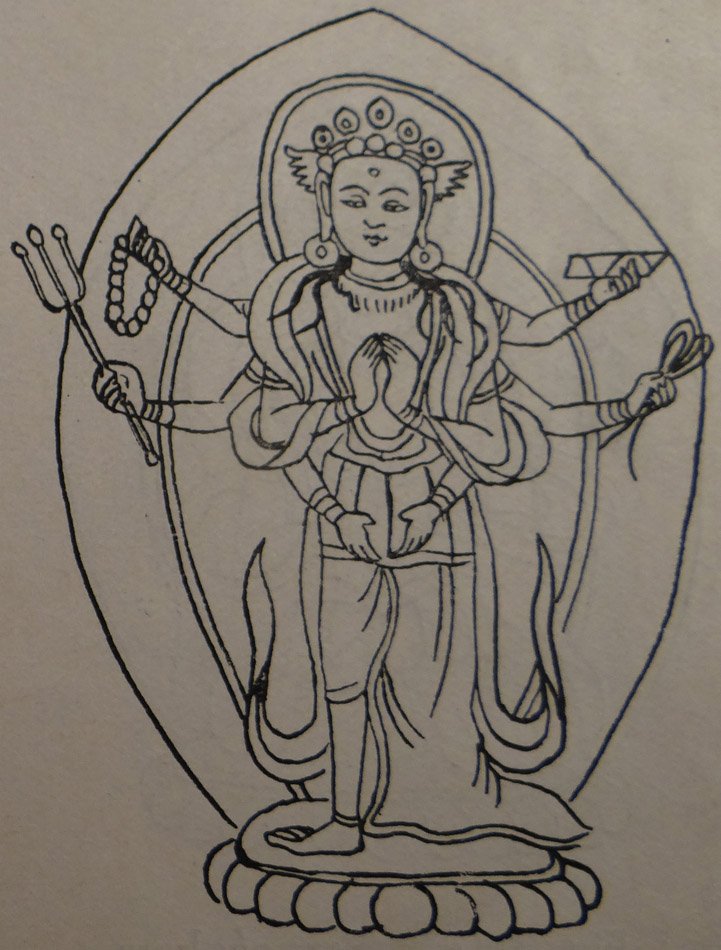The Indian Buddhist Iconography
by Benoytosh Bhattachacharyya | 1958 | 51,392 words | ISBN-10: 8173053138 | ISBN-13: 9788173053139
This page contains an iconography image of 108 forms of Avalokiteshvara (36): Jnanadhatu Lokeshvara and represents of the book Indian Buddhist Iconography, based on extracts of the Sadhanamala English translation. These plates and illustrations represent either photographs of sculptures or line-drawing reproductions of paintings or other representations of Buddhist artwork.
108 forms of Avalokiteśvara (36): Jñānadhātu Lokeśvara

Fig. 36A: Jñānadhātu Lokeśvara
This is figure 36 in a series of 108 forms of Avalokiteśvara from the Macchandar Vahal, Kathmandu, Nepal.
36. Jñānadhātu Lokeśvara. He is one-faced and eight-armed and stands on a lotus. Two of his hands are joined against his chest in forming the Añjali mudrā ; the second pair exhibits what is called the Kṣepaṇa mudrā. The remaining hands hold the rosary and the Tridaṇḍī in the right and the book and the noose in the left.
The Bodhisattva Avalokiteśvara (The Watchful Lord) also called Padmapāṇi (Lotus bearer) is the spiritual son of the Dhyāni Buddha Amitābha. He is one of the most popular Bodhisattvas of the Buddhist Pantheon having as many as 108 different forms [viz., Jñānadhātu Lokeśvara].
